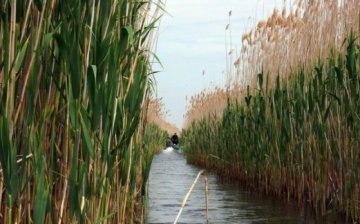Common reed, how is it useful
Common reed is familiar to everyone who lives near water bodies. It grows everywhere near lakes, rivers, ponds, in damp wetlands, forming thickets.
For medicinal purposes, young stems and leaves are harvested in May-June. Common reeds are dried under a canopy or in the attic, in a sufficiently ventilated room, spread out in a thin layer, periodically turning it over.
The rhizomes of the reed are taken from the bottom with a rake, washed with running water, the aerial parts, small roots are cut off, dried in the air for several hours, then dried in ovens, dryers, ovens. Sufficiently dry raw material has a sweetish taste, pleasant smell and breaks with a crunch. The shelf life of stems and leaves is up to a year, rhizomes up to 3 years.
Common cane and preparations made from it have diuretic and diaphoretic, antipyretic and anti-inflammatory properties. Besides, it contains quite a lot of vitamins.
For colds, edema, kidney disease, bladder use an infusion of crushed leaves and cane stalks (20 grams per glass of boiling water), infused for 4 hours in a thermos, and then strained. Drink 50 ml up to 4 times a day.
With general weakness, hypovitaminosis, infusions from cane stalks, prepared from 50 grams of fresh stalks, brewed with 300 ml of water, help. Insist 5-6 hours, filter and drink up to 4 times a day, 50 ml.
Common reed in the form of a powder from dried leaves is used for long healing, suppurating ulcers and wounds.
Common reed has also found application in nutrition: tender young shoots and rhizomes are consumed raw, baked, pickled, soups, mashed potatoes, vinaigrettes, flour for bakery products are prepared from them.




A fairly effective and fairly simple drug to manufacture, earlier in some pharmacies it was possible to buy ready-made infusions, but now I have not seen even dried stems and leaves for a long time, and there is not enough time to harvest them myself.